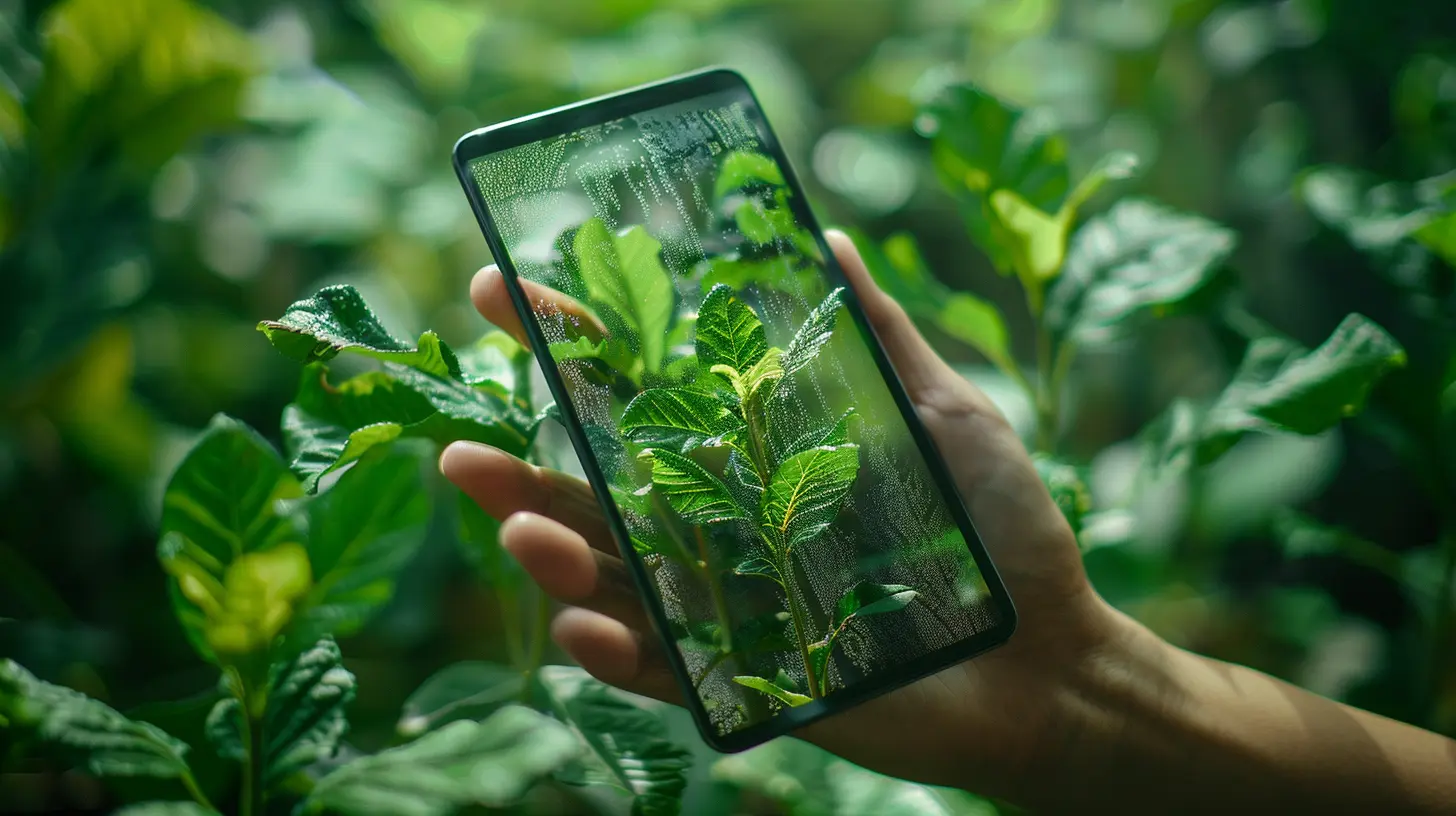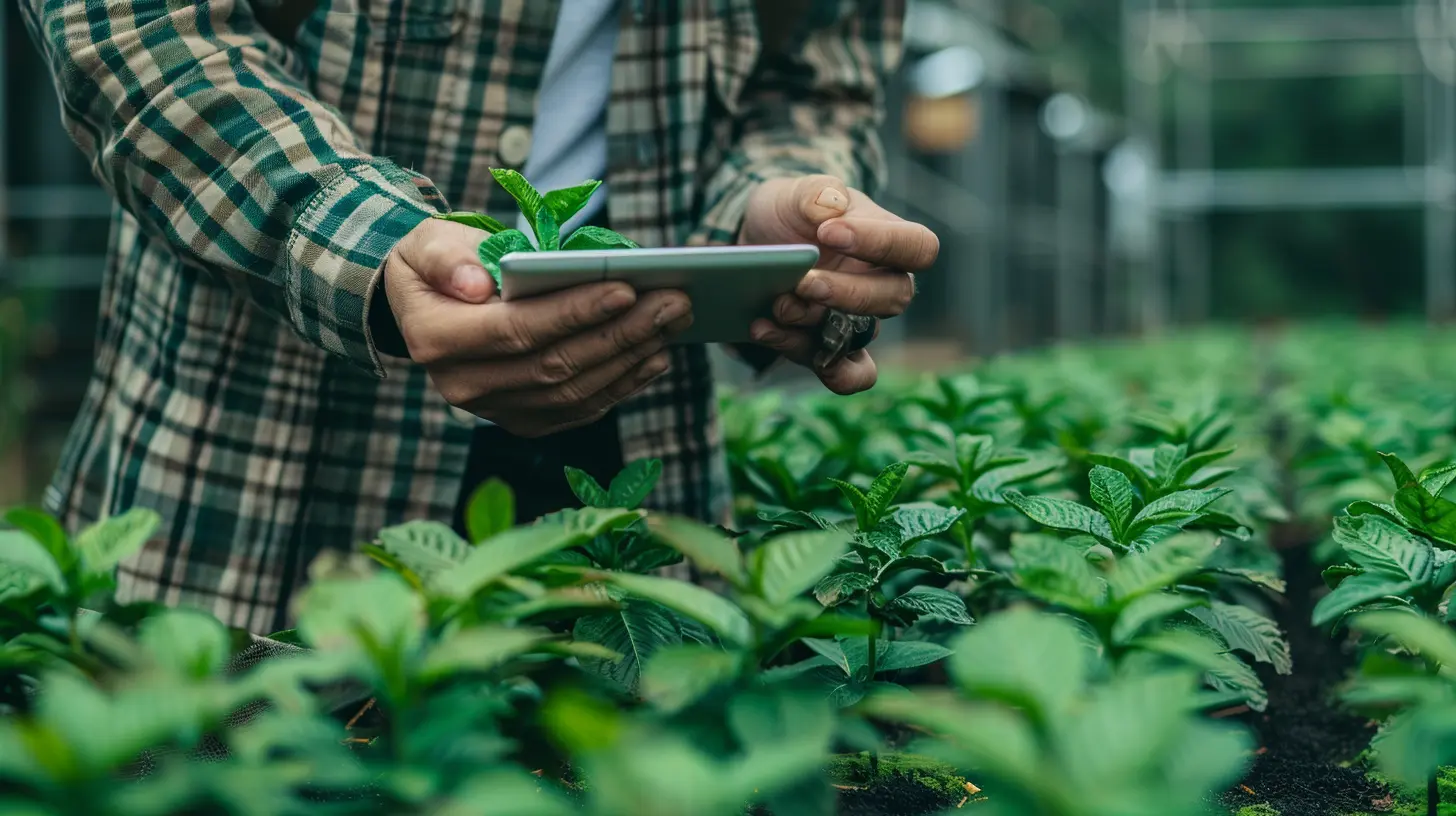The Environmental Impact of Manufacturing Touchscreen Devices
21 June 2025
Touchscreen devices are everywhere, aren’t they? From our smartphones to tablets, laptops, and even smart refrigerators, touchscreens have become an integral part of our lives. They’ve revolutionized the way we interact with technology, making it more intuitive and accessible. But have you ever stopped to wonder what kind of environmental toll these sleek and shiny gadgets have on the planet?
It’s easy to get caught up in the excitement of new technology without thinking about the bigger picture—like how these devices are made or what happens to them once they’ve outlived their usefulness. While we all love the convenience of modern technology, the manufacturing process of touchscreen devices comes with substantial environmental costs. Let’s dig into the nitty-gritty and explore the environmental impact of manufacturing touchscreen devices.

Raw Material Extraction: Digging Deep Into the Earth
Before your smartphone ever lands in your hands, a complex web of raw materials has been extracted from the Earth. The manufacturing process begins with mining. Major components of touchscreen devices require specific rare earth metals, such as lithium, cobalt, and tantalum. These metals are essential for batteries, screens, processors, and other critical internal components.But here’s the problem: mining these materials isn’t exactly a walk in the park for the environment.
The Environmental Toll of Mining
Mining activities often lead to deforestation, soil erosion, and the loss of biodiversity. The extraction of metals requires massive amounts of energy and water, resulting in the depletion of natural resources. On top of that, mining can release harmful chemicals into the surrounding environment, contaminating water supplies and soil. Toxic substances like mercury and arsenic, often used in mining processes, can wreak havoc on ecosystems.And let’s not forget about the greenhouse gases released during these operations. Heavy machinery and equipment run on fossil fuels, contributing significantly to carbon emissions. In fact, the mining industry is one of the biggest contributors to global carbon dioxide emissions—making it a major player in climate change.
In short, the raw material extraction needed for touchscreen devices comes with a hefty environmental price tag.

Manufacturing: Energy-Intensive and Polluting
Once the raw materials are harvested, they’re sent to factories where the real magic (or horror, depending on how you see it) happens. The manufacturing process of touchscreen devices is highly energy-intensive. A typical manufacturing facility uses an enormous amount of electricity, which is often generated from non-renewable sources like coal and natural gas.The Carbon Footprint of Factories
The carbon footprint of producing just one smartphone is staggering. According to some studies, manufacturing a single smartphone can produce around 70 kilograms of CO2 emissions. Multiply that by the billions of devices made each year, and you can see how the tech industry can have a massive impact on global warming.Then there’s the issue of toxic waste. Manufacturing processes often involve the use of harmful chemicals like solvents, acids, and heavy metals. These substances can end up in nearby rivers and air, polluting local environments and affecting the health of nearby communities. Remember, the factories producing our gadgets aren’t always located in the richest or most regulated countries. Often, they’re in regions where environmental regulations are lax, leading to unchecked pollution.

Touchscreen Technology: The Hidden Environmental Costs
While touchscreens themselves feel like a modern marvel, their production carries a set of unique environmental challenges. The glass used in touchscreens needs to be ultra-thin but highly durable, often requiring additional chemical treatments to make it scratch-resistant.Indium: A Rare Metal with Big Consequences
One of the key materials used in touchscreens is indium, a rare metal used to create transparent conductive layers. Indium is mined from zinc ores, and its extraction process is both energy-intensive and environmentally damaging. The supply of indium is limited, making it a non-renewable resource. As demand for touchscreen devices increases, the pressure to extract more indium puts greater strain on the environment.Additionally, the manufacturing process for touchscreens involves heating components to extreme temperatures, consuming vast amounts of energy. This energy consumption, coupled with the chemical processes used to create the touchscreen’s various layers, contributes to the overall environmental footprint.

Transportation: Shipping Around the World
After the devices are manufactured, they don’t just magically appear in your local store or on your doorstep. They’re often shipped from factories in far-flung corners of the world, usually in countries like China, Vietnam, or South Korea. This means these devices travel thousands of miles to reach consumers, and that transport process generates significant greenhouse gas emissions.The Logistics of Shipping
The shipping industry is another major contributor to global emissions. Cargo ships burn heavy fuel oil, one of the dirtiest forms of fuel, releasing large amounts of sulfur dioxide, nitrogen oxides, and particulate matter into the atmosphere. Air freight, which is often used for faster delivery times, is even worse—airplanes are notorious for their high carbon emissions.And it's not just the end product—raw materials, components, and semi-finished goods are transported between different countries during the manufacturing process, adding more emissions to the overall environmental impact.
E-Waste: The Afterlife of Your Touchscreen Device
We’ve all been there—your phone starts to slow down, the battery doesn’t last as long, and before you know it, you’re browsing for a new model. But what happens to your old device? The answer is simple: it becomes e-waste.The Growing Problem of E-Waste
E-waste, or electronic waste, is one of the fastest-growing waste streams in the world. According to the Global E-Waste Monitor, more than 50 million metric tons of e-waste were generated in 2019, and that number is expected to rise. Unfortunately, a large portion of this waste isn’t properly recycled, leading to harmful environmental consequences.Most e-waste ends up in landfills, where toxic materials like lead, mercury, and cadmium can leach into the soil and water, contaminating ecosystems and posing health risks to humans. Even when e-waste is recycled, it’s often done in countries with lax environmental and labor laws, where improper handling of hazardous materials can release dangerous pollutants into the air and water.
Planned Obsolescence: An Environmental Nightmare
Many devices are designed with planned obsolescence in mind, meaning they’re built to have a limited lifespan. Whether it’s through software updates that slow down your device or hardware that’s difficult (or impossible) to repair, manufacturers often encourage consumers to upgrade to newer models more frequently. This results in a never-ending cycle of consumption and waste, further exacerbating the e-waste problem.
What Can Be Done? Steps Toward a Greener Future
By now, you’re probably wondering: is there any hope? Can we continue to enjoy our touchscreen devices without wreaking havoc on the planet? The answer is yes—but it’s going to require some serious changes, both from manufacturers and consumers.More Sustainable Manufacturing Practices
One of the most effective ways to reduce the environmental impact of touchscreen devices is by adopting more sustainable manufacturing practices. This could include using renewable energy sources to power factories, reducing the use of harmful chemicals, and finding more environmentally friendly ways to extract raw materials.Some companies are already taking steps in the right direction. For example, Apple has committed to using 100% recycled rare earth elements in its devices, and other tech giants are following suit. However, there’s still a long way to go before the industry as a whole becomes truly sustainable.
Extending the Lifespan of Devices
Another key solution is to extend the lifespan of touchscreen devices. Instead of upgrading your smartphone every two years, consider holding onto it for longer. Many devices can continue to function well with a little maintenance, like replacing the battery or repairing a cracked screen.Manufacturers can also play a role by designing devices that are easier to repair and upgrade, rather than pushing consumers to buy new models. This would help reduce the amount of e-waste generated and lessen the demand for new raw materials.
Recycling and Responsible Disposal
Finally, proper recycling and disposal of e-waste are crucial. Consumers should make use of recycling programs offered by manufacturers and retailers, which ensure that valuable materials are recovered and hazardous components are safely disposed of.Governments can also step in by implementing stricter regulations on e-waste disposal and encouraging the development of more efficient recycling technologies.
Conclusion: It’s Time to Rethink Our Relationship with Technology
There’s no denying that touchscreen devices have transformed our lives for the better. But as we’ve seen, their environmental impact is significant, from the extraction of raw materials to the energy-intensive manufacturing process and the growing problem of e-waste.So, what’s the takeaway? It’s up to all of us—manufacturers and consumers alike—to rethink our relationship with technology. By supporting more sustainable practices, extending the lifespan of our devices, and responsibly disposing of e-waste, we can help reduce the environmental toll of touchscreen devices and move toward a greener future.
all images in this post were generated using AI tools
Category:
Touchscreen DevicesAuthor:

Kira Sanders
Discussion
rate this article
2 comments
Marni Jones
This article sheds essential light on the often-overlooked environmental costs of touchscreen device manufacturing. It's crucial that we acknowledge these impacts as we advance technologically. Understanding the balance between innovation and sustainability can help us make more informed choices moving forward. Thank you for bringing attention to such an important topic!
August 18, 2025 at 12:06 PM

Kira Sanders
Thank you for your thoughtful comment! I appreciate your recognition of the need for balance between technological innovation and environmental sustainability.
Clara Underwood
Great article! It’s wild to think that our beloved touchscreen devices come with a side of environmental drama! Let’s hope we can swipe right on greener manufacturing methods. After all, the only thing that should be getting hot from our screens is our daily dose of memes, not the planet! 🌍✨
June 22, 2025 at 3:24 AM

Kira Sanders
Thank you! I completely agree—it's crucial we prioritize sustainable practices to protect our planet while enjoying our devices. 🌱


